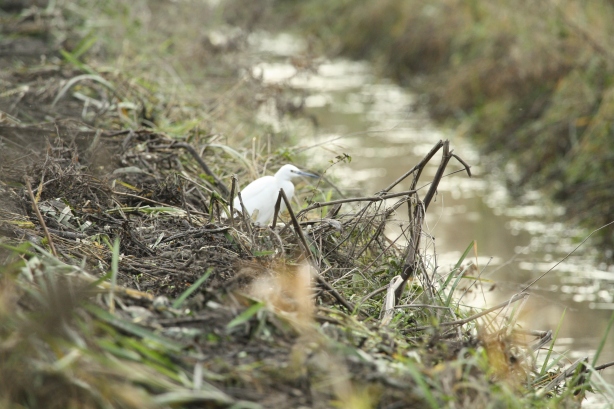
A trip to a place that I always enjoy visiting was on the cards now that the major autumn rush has finally ended. It was to be a solo trip, as the rest of the A team seem to have “mothballed” their binoculars for the year. A late starting time of 8-30am on a cold, but pleasant (for late November) morning had me at Burton Mere on the Dee estuary by 10-00am. A large group of Whooper Swans were feeding in the distance, but no sign of the almost resident Cattle Egrets. In the reserve centre, news of the Water Pipits was positive so, after meeting up with Kevin Hughes, Bill & Marie from Macclesfield, we made our way out to see them. On the way there a female Hen Harrier was seen and a close Little Egret, good start to the mornings birding. We were soon enjoying views of about 6 Water Pipits in the company of Meadow Pipits and Pied Wagtails. They kept us entertained, as did Kevin who began speaking welsh when another birding pal Ian Evans from Denbigh walked into the hide. A few old birders “tails” came out and we all had a good laugh. Myself & Ian walked out up to the old fort lookout over the Dee estuary, by now it was a little cooler but visibility was great with Point of Ayr, Hilbre Island clearly visible. Up to 3 Marsh Harriers, 2 female Hen Harriers, Great White Egret and finally after about 30 minutes, a hunting Short eared Owl, great birds to watch at any time!
We headed back to the reserve centre for a warm up and then I went back to my car to try to find the location of a female Smew on Newchurch Common near Sandiway. It looked a little awkward so I decided to go down onto Denhall Lane and continue watching the Dee estuary. In about an hour, as it was getting cooler as I left, I saw: – 3 Short eared Owl, 1 Buzzard, 3 Marsh Harrier, 2 female Hen Harrier (missed the male Hen Harrier that had been present) 2 Kestrel, missed a perched Merlin. There was a lot of Little Egret`s around, I counted around 20 birds. Headed for home around 3pm enjoying my cars heater all the way!!
Dave O.














